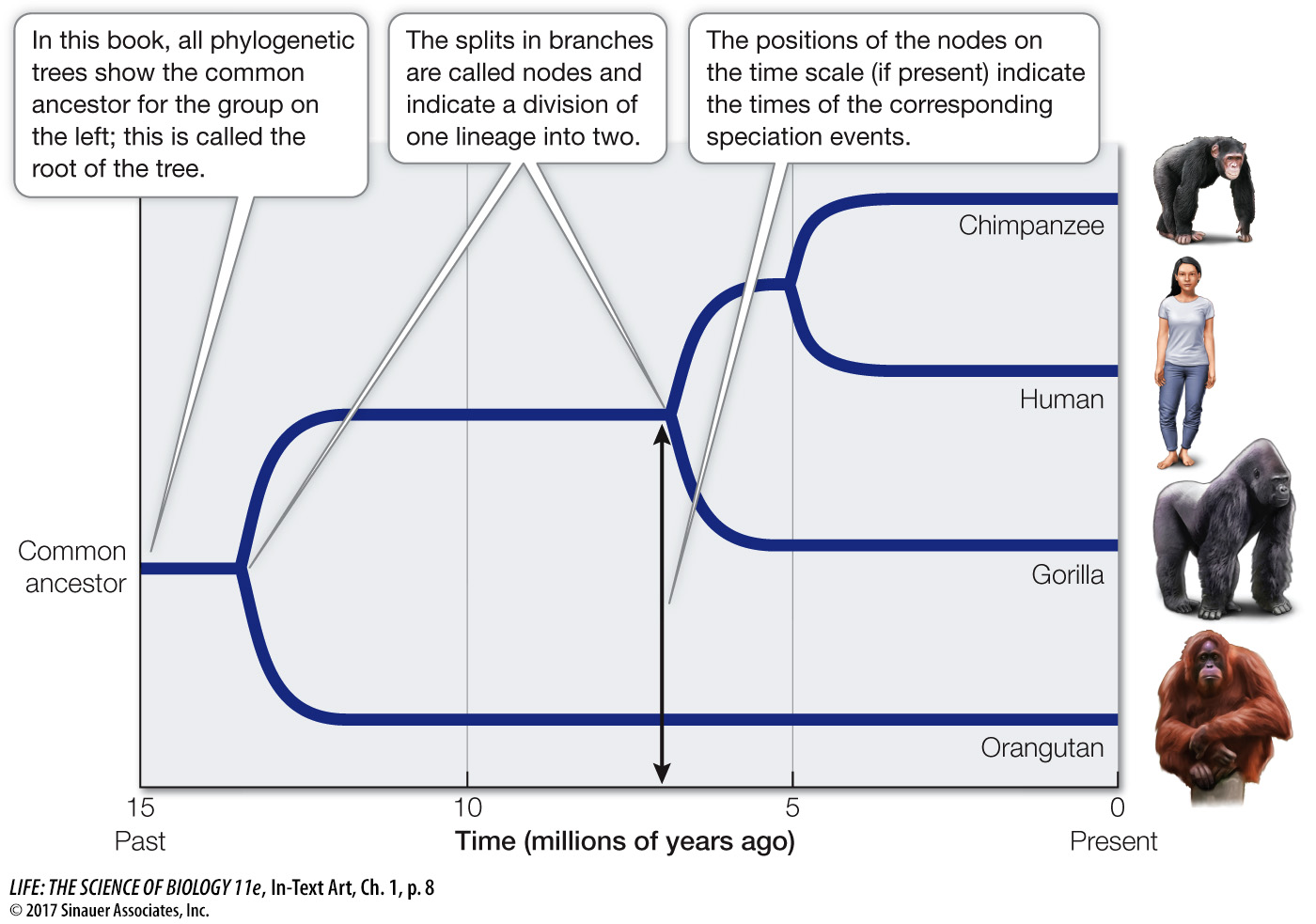Biologists trace the evolutionary tree of life
Populations geographically isolated from one another evolve differences. As populations diverge from one another, individuals from one population become less likely to reproduce successfully with individuals of the other populations. Eventually these differences between the populations become so great that they are considered to be different species. Thus species that share a fairly recent evolutionary history are generally more similar to each other than are species that share an ancestor in the more distant past. By identifying, analyzing, and quantifying similarities and differences among species, biologists can construct phylogenetic trees that portray the evolutionary histories of the different groups of organisms. As an example, we can show the evolutionary relationships among humans and our closest living relatives in a branching diagram that shows how they diverged from a common ancestor. In this tree, the living species are shown at the tips of the branches, and the branches show when these groups diverged from one another along a time scale. Our convention in this book will be to place phylogenetic trees on their sides, with the oldest lineages on the left and the most recent to the right.

Tens of millions of species exist on Earth today; many times that number lived in the past but are now extinct. Biologists give each of these species a distinctive scientific name formed from two Latinized names—
9
Much of biology is based on comparisons among species. Meaningful interpretations of those comparisons require an understanding of evolutionary relationships of the respective species. Our ability to reconstruct evolutionary relationships has been greatly enhanced in recent decades by gene sequencing. Genomic sequence analysis and other molecular techniques have enabled biologists to augment evolutionary knowledge based on the fossil record with a vast array of molecular evidence. The result is the ongoing compilation of phylogenetic trees that document and diagram evolutionary relationships. The broadest categories of the tree of life are shown in Figure 1.9, and they will be surveyed in more detail in Part Seven. (The tree is expanded in Appendix A, and you can also explore the tree interactively online.)

Question
Q: According to this phylogenetic tree, are fungi more closely related to plants or to animals?
This tree shows that the last common ancestor for fungi and animals was much more recent than the last common ancestor for fungi and plants. Fungi are therefore more closely related to animals than to plants.
See the Interactive Tree of Life
www.life11e.com/
Although many details remain to be clarified, the broad outlines of the tree of life have been determined. Its branching patterns are based on a rich array of evidence from fossils, structures, metabolic processes, behavior, and molecular analyses of genomes. Recall that the primary division of life—